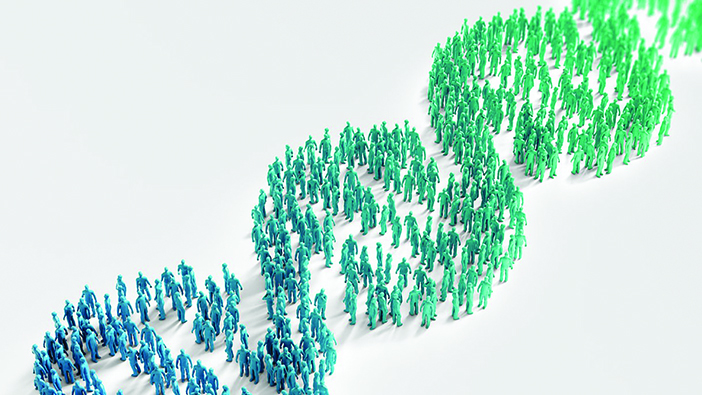New methods allow for a better understanding of how genetic conditions affect different populations.
By using new methods for analyzing DNA data and medical records, researchers from Brown University are helping improve the understanding of complex traits that will make more discoveries relevant to non-white, non-European ancestry groups.
In a study published in the May 5 issue of the American Journal of Human Genetics, the researchers illustrated examples of the robust associations of trait determinants, or patterns of similarity, while studying 25 traits in over 600,000 individuals from seven diverse human ancestries. With these similarities, discoveries about the nature of diseases or illnesses and their responses to potential treatments become more relevant to larger groups of people—including populations that had previously been ignored or understudied.
Genome-wide association (GWA) datasets, which are commonly used by geneticists, are based on the assumption that individual genetic mutations underwrite the genetic basis of traits, says study author Sohini Ramachandran, PhD, a professor of biology and of computer science who directs both the Center for Computational Molecular Biology and the Data Science Initiative at Brown. The idea is that a discovery about those mutations will be relevant to all people across a range of diverse ancestry groups, so that if the finding is used to develop treatments for genetic conditions, it will be applicable for all people with that condition.
However, recent studies have shown that GWA results estimated from self-identified European individuals are not transferable to non-European individuals. Because of this, the insights from the datasets are largely biased toward sampling individuals with European ancestry. The statistical hypothesis underlying the GWA framework is unfairly restrictive, Ramachandran says.
Thus the researchers used a new “enrichment analysis” methodology, previously developed in a collaboration between Ramachandran and Lorin Crawford, PhD, the RGSS Assistant Professor of Biostatistics, to address bias and underrepresentation.
“In this paper, which involved very careful analysis of a ream of data across multiple biobanks, we show that data viewed only through a very specific GWA lens may look disparate and irreconcilable,” Ramachandran says. “Yet, viewed in a more equitable way, with a more expansive methodology, it becomes biologically unified, interpretable, and, importantly, actionable.”
Ramachandran’s interest in the topic started when she learned about a study showing that children with acute lymphoblastic leukemia had different responses to the standard treatment regimen depending upon their ancestry group—for example, non-white children were more likely to relapse and had a worse prognosis. As an evolutionary biologist and population geneticist, Ramachandran started thinking about the increasing reliance on GWA studies in the development of “personalized” treatments for diseases and conditions.
“There wasn’t a lot of discussion around the extent to which the results from these studies were going to be directly applicable to all ancestries,” she says. “And based on population genetics and theory, it just seemed really unlikely that this was going to pan out in a way that was equitable.”




